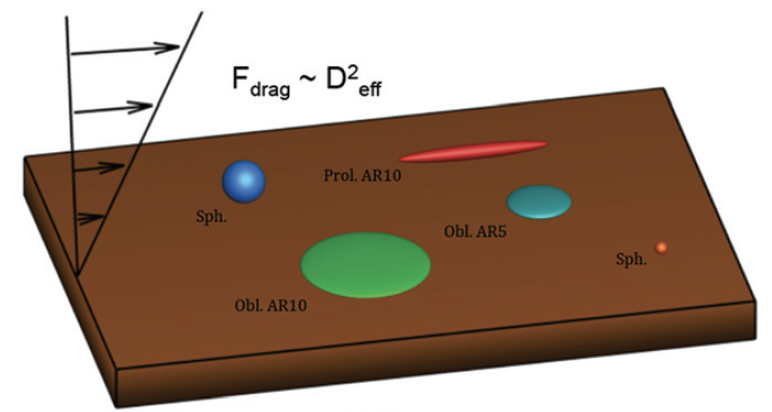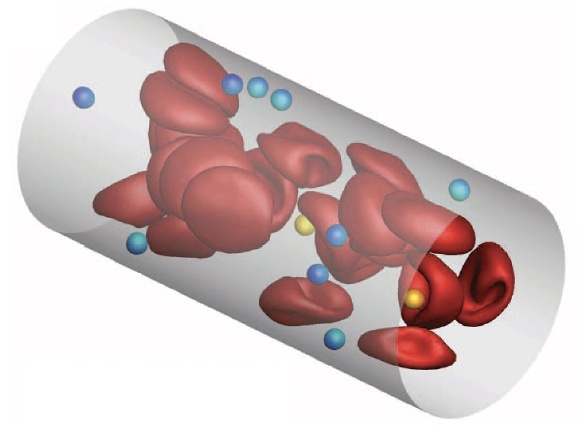Drug delivery
The use of targeted micro- and nano-carriers for the delivery of imaging agents and drugs provides a promising strategy for early detection and treatment of diseases such as cancer. However, their physical delivery is a very challenging task. The development of efficient strategies for the delivery of carriers, including their distribution in the organism following systemic administration and their transport through biological barriers (e.g. microvascular walls, interstitial space, and cell membranes), requires a much more detailed understanding of the relevant physical and biological mechanisms. One of the first steps in vascular drug delivery is the transport and distribution of micro- and nano-carriers within the microcirculation, which is tightly coupled with the corresponding blood flow.
Adhesion of drug delivery carriers in blood flow

Majority of drug delivery technologies focus on spherical nanoparticles as carrier vehicles. However, several studies have indicated that under blood flow environment, micro-particles have a higher propensity than nano-particles to migrate toward the wall. Also, non-spherical particles theoretically have a higher area of surface-adhesive interactions than spherical particles. Therefore, we investigate the adhesive performance of particles of four distinct shapes (spherical, oblate, prolate, rod) with sizes spanning from nano- to micro-scale in blood flow. Our study indicates that in presence of red blood cells, micro-scale non-spherical particles undergo enhanced adhesion in comparison to nanoscale spherical particles, resulting in their more frequent retention. These results are important for the design optimization of drug delivery systems.
- M. Cooley, A. Sarode, M. Hoore, D. A. Fedosov, S. Mitragotri, and A. Sen Gupta, "Influence of particle size and shape on their margination and wall-adhesion: implications in drug delivery vehicle design across nano-to-micro scale", Nanoscale, 10, 15350-15364, 2018.
Margination of drug delivery carriers in blood flow

Successful delivery of micro- and nano-carriers strongly depends on their distribution within vessel cross-sections, since their binding is only possible in case of direct particle-wall interactions. The migration of particles suspended in blood toward the walls, which is often referred to as margination, depends on several relevant parameters, including blood flow properties (e.g. flow rate, red blood cell deformability, and hematocrit - the volume fraction of RBCs), vessel size, and particle characteristics (e.g. size, shape, and deformability). We investigate the role of particle size and shape on the margination efficiency, and find that micro-particles possess a larger probability of being marginated than nano-particles. Furthermore, even though spherical particles marginate slightly better than ellipsoids, the adhesion efficiency of ellipsoidal particles is expected to be superior in comparison to that of spheres.
- K. Müller, D. A. Fedosov, and G. Gompper, "Understanding particle margination in blood flow - A step toward optimized drug delivery systems", Medical Engineering & Physics, 38, 2-10, 2016.
- K. Müller, D. A. Fedosov, and G. Gompper, "Margination of micro- and nano-particles in blood flow and its effect on drug delivery", Scientific Reports, 4, 4871, 2014.